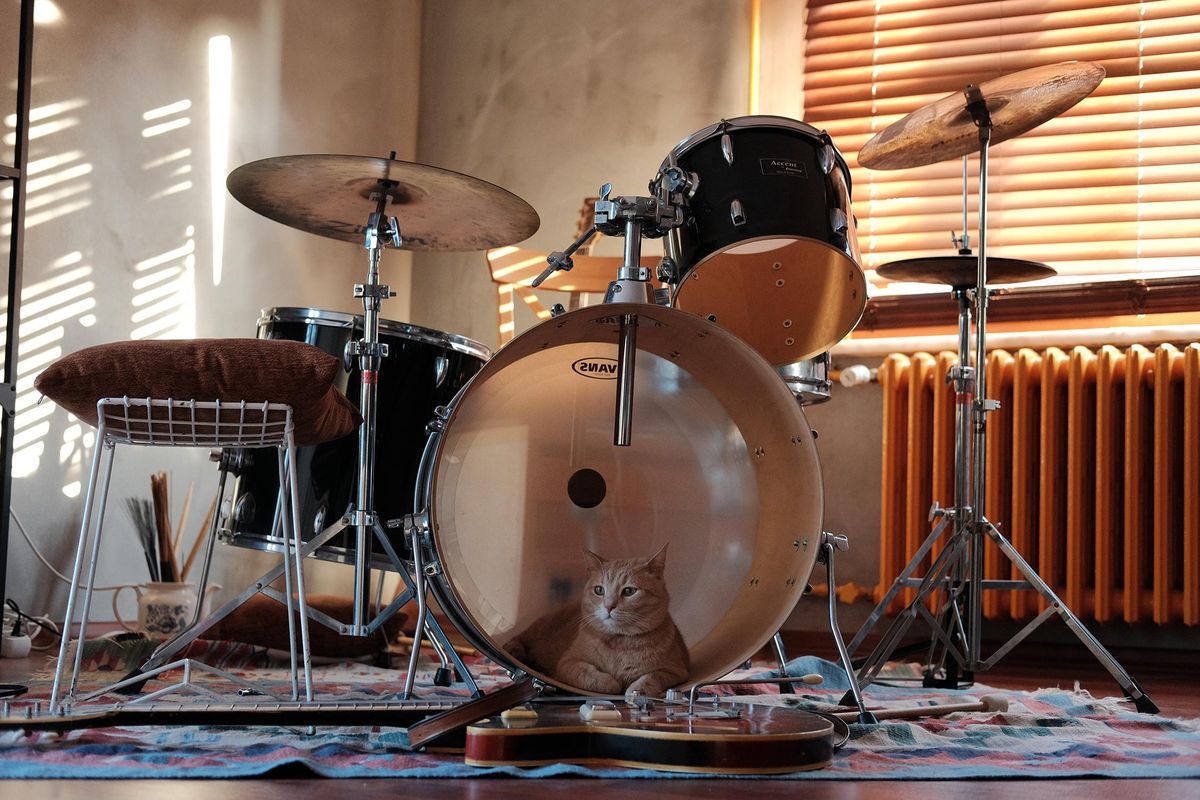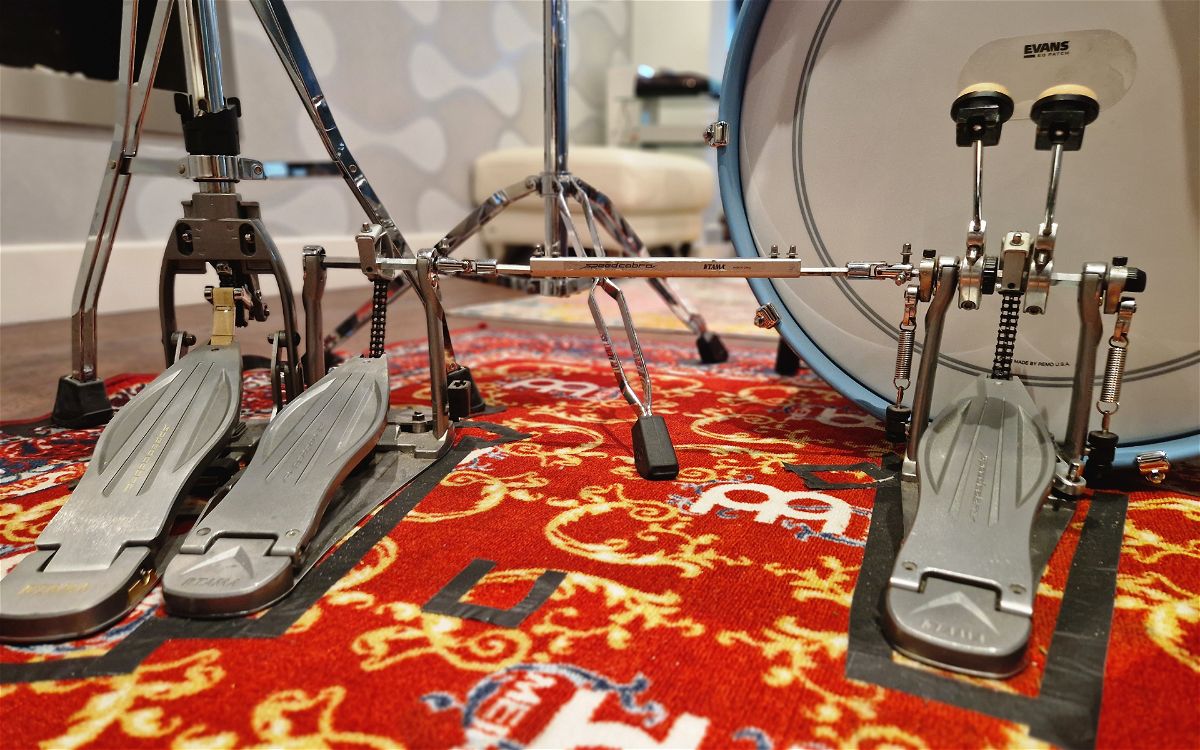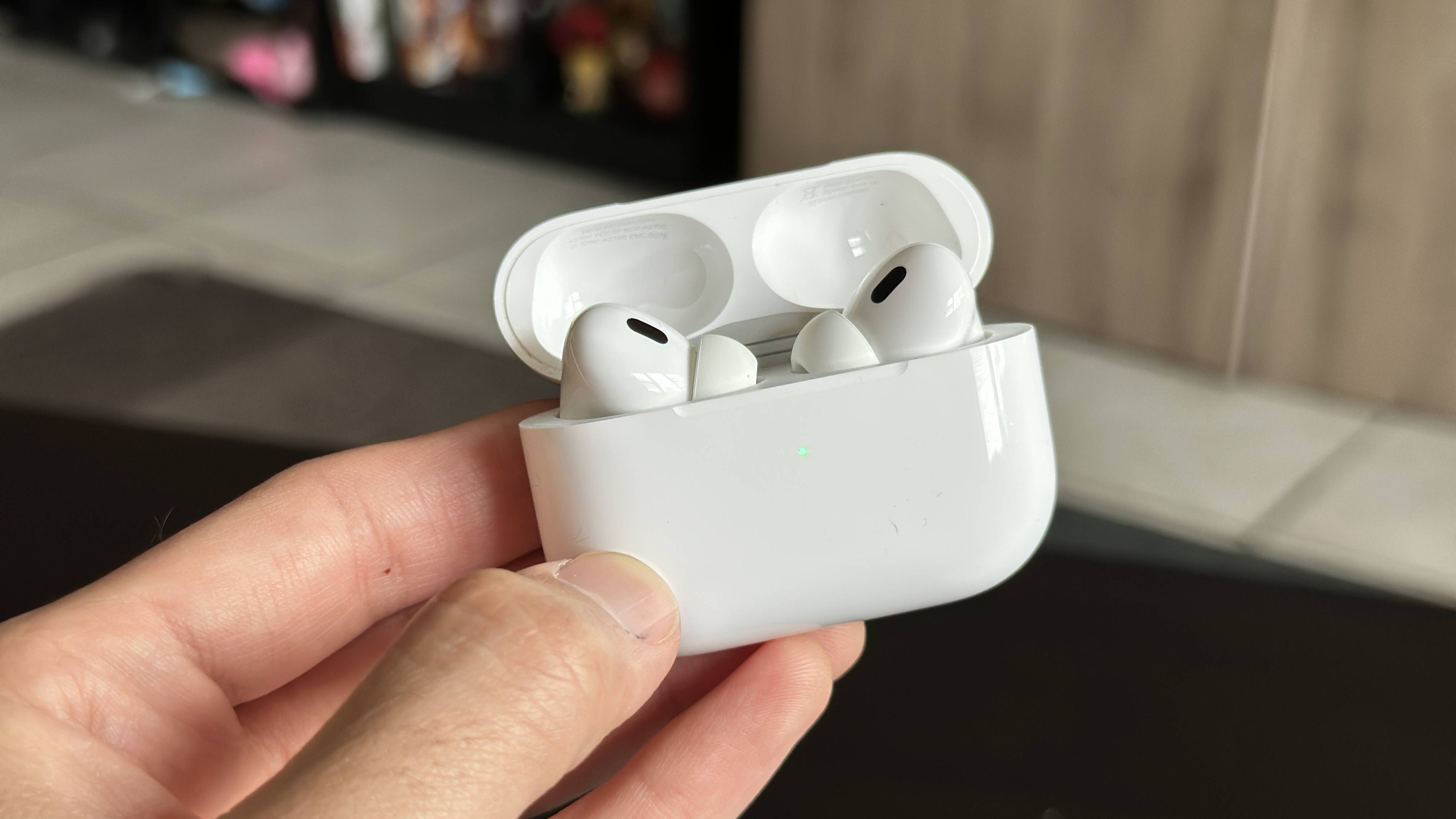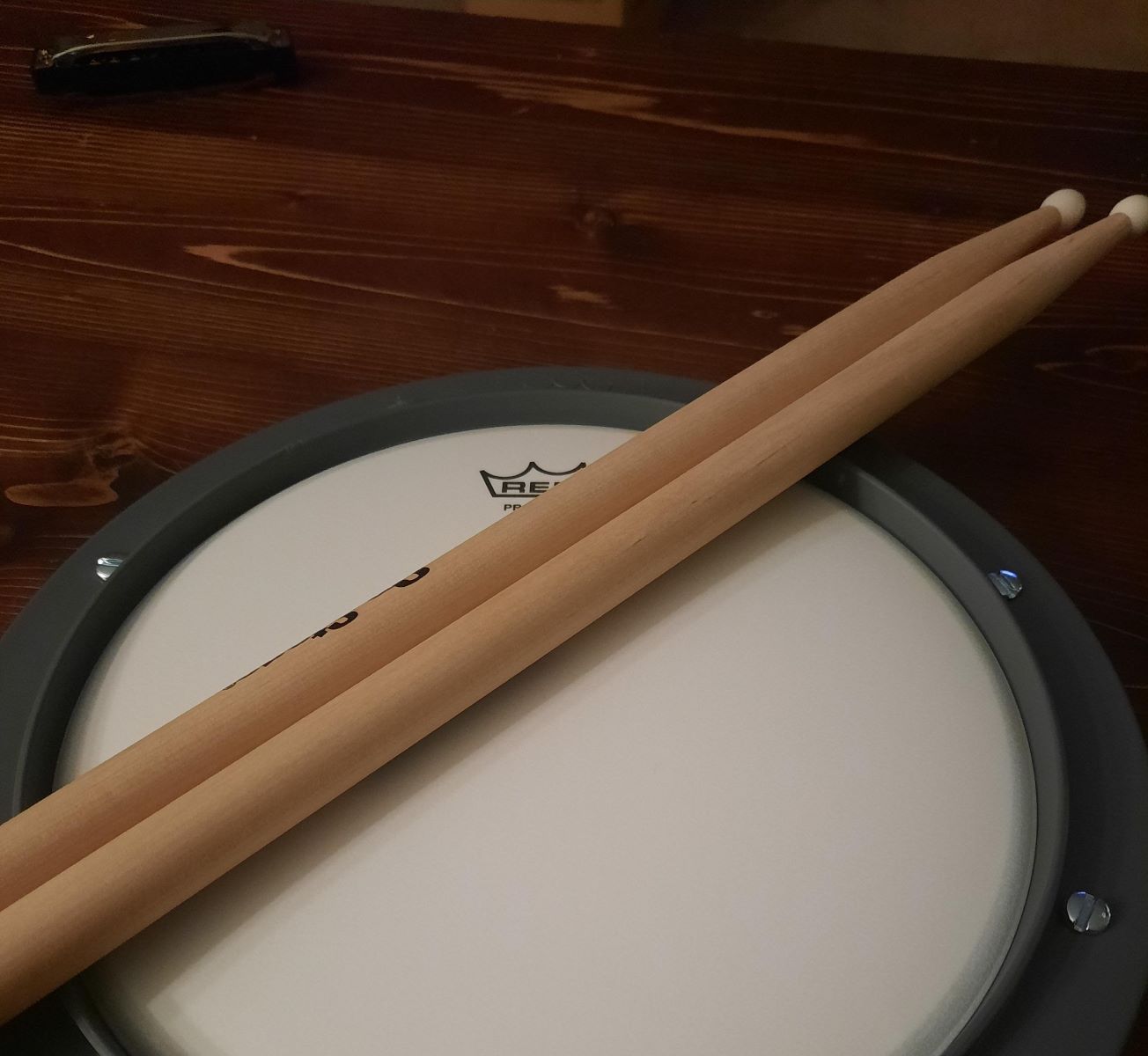Home>Instruments>Bass>How To Muffle A Bass Drum


Bass
How To Muffle A Bass Drum
Published: November 29, 2023
Learn effective techniques and tips on how to muffle a bass drum for optimal sound control and improved performance. Enhance your bass playing skills today!
(Many of the links in this article redirect to a specific reviewed product. Your purchase of these products through affiliate links helps to generate commission for AudioLover.com, at no extra cost. Learn more)
Table of Contents
Introduction
The bass drum is an integral part of any drum kit, providing the foundation of the rhythm section. It creates a powerful and deep low-end sound that adds depth and intensity to the music. However, there are times when you may want to muffle or reduce the resonance of the bass drum to achieve a different sound or to control the volume in certain settings.
Whether you’re a beginner drummer or a seasoned professional, knowing how to muffle a bass drum effectively can help you achieve the desired sound and better control over your drum kit. There are various techniques and materials that can be used to achieve the desired effect, and in this article, we will explore some of these methods.
Before we dive into the techniques, it’s essential to note that the goal of muffling a bass drum is not to completely deaden the sound but rather to refine and control it. The idea is to maintain the necessary low-end punch while reducing any unwanted overtones. It’s all about finding the right balance to suit your musical style and preferences.
So, whether you’re looking to muffle your bass drum for recording purposes, live performances, or practice sessions in your home, let’s explore some effective methods that can help you achieve the desired sound.
Choosing the Right Materials
When it comes to muffling a bass drum, the right choice of materials can make a significant difference in the quality of sound you achieve. Here are some commonly used materials for muffling a bass drum:
- Pillow or Blanket: One of the simplest and most common methods is to place a pillow or a folded blanket inside the bass drum against the batter head. This helps to absorb some of the drum’s resonance, resulting in a shorter sustain and a slightly drier sound.
- Foam Pads or Dampening Squares: Foam pads or dampening squares are small pieces of foam that can be attached to the inner surface of the drumhead with adhesive. These pads help to reduce overtones and provide a more controlled sound.
- Muffling Rings: Muffling rings are circular, foam or rubber rings that are placed directly on top of the drumhead. They come in various sizes and can be positioned to achieve different levels of dampening. Muffling rings are versatile and can be easily adjusted or removed to alter the sound as needed.
- Gel Pads: Gel pads are adhesive rings or squares made of gel-like material. They can be attached to the drumhead to control and dampen the sound. Gel pads are customizable, as you can cut them to different shapes and sizes to achieve the desired muffling effect.
It’s important to experiment with different materials and combinations to find the right balance of muffling for your bass drum. Each material will produce a slightly different sound and level of dampening, so trust your ears and adjust accordingly.
Additionally, consider the specific characteristics of your drum kit and the musical style you play. The size and material of your bass drum, as well as the type of music you perform, can influence the choice of materials for muffling. Keep in mind that what works for one drummer may not work for another, so it’s important to explore and find your own preferred combination.
Preparing the Drum
Before applying any muffling techniques, it’s crucial to ensure that your bass drum is properly prepared. Here are some important steps to follow:
- Clear the Drumhead: Start by removing any debris, dust, or dirt from the drumhead. Wipe it clean with a soft cloth to ensure a smooth surface.
- Tune the Drum: Take the time to tune your bass drum to the desired pitch. Use a drum key to adjust the tension of the drumhead evenly. A well-tuned drum will provide a solid foundation for any muffling technique.
- Consider Drumhead Choices: The type of drumhead you use can also impact the sound and the effectiveness of muffling. Experiment with different drumhead options, such as single-ply, double-ply, coated, or clear, to find the one that suits your preferred sound and muffling requirements.
- Inspect Hardware: Check the hardware of your bass drum, including the tension rods, claws, and spurs. Ensure they are all tightened properly, and there are no loose or damaged parts that could affect the sound or stability of the drum.
By properly preparing your bass drum, you create an optimal starting point for applying muffling techniques. A clean and well-tuned drum will provide a solid foundation for achieving the desired sound control and tone.
Applying Dampening Techniques
Once you have prepared your bass drum, it’s time to explore various dampening techniques to control the sound and resonance. Here are some effective methods:
- Internal Dampening: Placing a pillow or a folded blanket inside the bass drum against the batter head is a common internal dampening technique. This method helps absorb excess resonance and reduces sustain, resulting in a tighter and punchier sound. Experiment with different sizes and positions of the pillow or blanket to achieve the desired level of dampening.
- External Dampening: Using external dampening methods involves placing materials on the outside of the drumhead to control the sound. This can be done by attaching foam pads, dampening squares, or muffling rings to the drumhead. These materials absorb overtones and offer additional control over the drum’s resonance. Adjust their positioning and number to find the right balance for your desired sound.
- Hole or Port: Another effective way to dampen a bass drum is by cutting a small hole or using a pre-made port in the front drumhead. This helps to allow some of the air to escape, resulting in a shorter sustain and a focused sound. Experiment with different hole sizes to find the balance between control and tone.
- Duct Tape or Moongel: Duct tape or Moongel can be placed strategically on the surface of the drumhead to dampen specific areas and control the sound. By applying small pieces of tape or Moongel, you can fine-tune the dampening to suit your preferences and achieve the desired sound.
Remember, the key is to experiment with different combinations of internal and external dampening techniques to find the right balance for your bass drum. Each method has a different effect on the sound, so explore and adjust until you achieve the desired sound control and tone.
Using Drum Muffling Accessories
In addition to the traditional methods of muffling a bass drum, there are specific accessories designed to provide precise and convenient control over the drum’s sound. Here are some popular drum muffling accessories:
- Bass Drum Muffling Pads: Muffling pads are specially designed to fit inside the bass drum against the batter head. These pads are made of foam or other dampening materials and offer adjustable levels of muffling. They are versatile and can be easily positioned or removed to achieve the desired sound.
- Bass Drum Muffling Systems: Muffling systems are comprehensive solutions that include multiple components to dampen the bass drum. These systems often include a combination of internal pads, external dampening materials, and other accessories like dampening rings or adjustable clips. They provide a quick and convenient way to achieve consistent and controlled sound with minimal effort.
- Bass Drum Resonance Control Devices: Resonance control devices are designed to be attached to the drumhead or the shell of the bass drum to control its resonance. These devices typically consist of adjustable weights or dampening materials that allow you to fine-tune the sound. They are particularly useful for live performances where quick adjustments may be necessary.
Using these drum muffling accessories can provide you with a more precise and convenient way to control the sound of your bass drum. Experiment with different accessories and configurations to find the right combination that suits your preferences and musical style.
Adjusting Drum Tuning
Another crucial aspect of muffling a bass drum is adjusting the drum’s tuning. The tension of the drumhead significantly affects the sound and resonance of the bass drum. Here are some tips for adjusting the tuning:
- Higher Tuning: Tightening the tension rods evenly around the drumhead will result in a higher-pitched drum with more sustain. This tuning is ideal for genres that require a “boomy” and resonant bass drum sound.
- Lower Tuning: Loosening the tension rods will create a deeper and more focused sound with reduced sustain. This tuning is suitable for genres that demand a tighter and punchier bass drum sound.
- Equalized Tuning: Achieving even tension across all the tension rods will provide a balanced and controlled sound. This method is ideal for maintaining consistency and avoiding any unwanted overtones.
- Experimenting with Different Tuning Combinations: Don’t be afraid to experiment with different tuning combinations. Try loosening or tightening specific rods to achieve a specific pitch or to dampen specific areas of the drumhead. This experimentation will allow you to find the sweet spot that suits your desired sound.
Remember to tune your bass drum in relation to the rest of your drum kit. It’s important to find a balance between the bass drum and other drums to create a cohesive and well-balanced sound. Additionally, regularly check and fine-tune the drum’s tuning, as changes in temperature, humidity, and even playing time can affect the tension of the drumhead.
By understanding how drum tuning impacts the sound of your bass drum, you can effectively combine tuning and muffling techniques to achieve your desired sound and create a captivating rhythm section.
Experimenting with Different Methods
When it comes to muffling a bass drum, there is no one-size-fits-all approach. Every drummer has unique preferences and musical styles, so it’s important to experiment with different methods to find what works best for you. Here are some ways to explore and experiment with different muffling techniques:
- Start with the Basics: Begin by trying the fundamental methods such as using a pillow or blanket, applying external dampening materials, or using muffling rings. These techniques provide a good foundation for controlling the sound of the bass drum.
- Combine Techniques: Feel free to combine multiple muffling techniques to achieve your desired sound. For example, you can use both internal and external dampening methods or mix different materials to find the right balance of resonance control and tone.
- Adjust Placement and Amount: Experiment with the positioning and amount of muffling materials. Move the pillow or muffling pads around the drum to see how it affects the sound. Try adding or removing external dampening materials until you achieve the desired control and tonal characteristics.
- Solicit Feedback: Reach out to fellow drummers or seek feedback from live sound engineers or recording professionals. They may have valuable insights or suggestions based on their experiences. Don’t be afraid to learn from others and incorporate their advice into your experimentation process.
- Consider the Musical Context: Keep in mind the genre of music you play and the specific requirements of each musical situation. Different styles of music may call for different levels of muffling, so adjust your techniques accordingly to fit the musical context.
Remember, the art of muffling a bass drum is subjective and personal. It’s all about finding the right balance of resonance control and tonal characteristics that best complement your playing style and the music you create. So, don’t be afraid to step out of your comfort zone, get creative, and explore the possibilities that different muffling techniques offer.
Tips and Troubleshooting
While muffling a bass drum can be a rewarding process, it may also come with its own challenges. Here are some tips and troubleshooting suggestions to help you navigate any obstacles you may encounter:
- Start with Minimal Muffling: Begin with minimal muffling and gradually add more materials or adjust the tuning until you find the desired sound. Starting with less can help you avoid over-dampening the drum and losing its natural resonance.
- Listen and Adjust: Trust your ears and actively listen to how the bass drum sounds in different contexts. Pay attention to the overtones, sustain, and overall tone. Make small adjustments and keep experimenting until you achieve the sound that best fits the music you are playing.
- Account for Room Acoustics: Remember that the sound of your bass drum can be influenced by the acoustics of the room you are playing in. Take note of how different muffling techniques interact with the room’s characteristics and adapt accordingly.
- Take Regular Breaks: When experimenting with different muffling techniques, it’s important to take regular breaks to give your ears a chance to rest. This will help maintain objectivity and prevent ear fatigue, allowing you to make better decisions about the sound you are trying to achieve.
- Don’t Be Afraid to Revisit: As your playing style or musical preferences evolve, it’s normal to revisit and readjust your muffling techniques. Keep experimenting and exploring new possibilities to continually refine and improve your bass drum sound.
- Stay Open to Change: Embrace the fact that muffling a bass drum is an ongoing process that may require adjustments over time. Don’t be afraid to try new methods, materials, or approaches to discover fresh sounds and expand your sonic palette.
- Be Patient: Achieving the perfect sound may take time and experimentation. Be patient with yourself and enjoy the process of exploring and refining your bass drum sound.
Remember, there is no right or wrong way to muffle a bass drum. It’s all about finding what works best for you as a drummer and creating a sound that enhances your musical expression. So, be adventurous, have fun, and let your creative instincts guide you as you navigate the world of bass drum muffling.
Conclusion
Muffling a bass drum is a valuable skill that allows drummers to have better control over their sound and adapt to various musical settings. By utilizing different materials, techniques, and accessories, drummers can achieve the desired balance of resonance and tone.
Throughout this article, we have explored various methods of muffling a bass drum, including choosing the right materials, applying dampening techniques, using drum muffling accessories, adjusting drum tuning, experimenting with different methods, and troubleshooting common issues.
Remember, there is no one-size-fits-all approach when it comes to muffling a bass drum. Each drummer has their own sound preferences and musical style. It’s important to experiment, trust your ears, and find the combinations that best suit your needs. Whether you prefer a deep and booming sound or a tight and focused tone, the key is to achieve a balance that complements your music.
As you continue your journey in muffling a bass drum, never stop exploring and expanding your skills. Be open to trying new methods, seeking feedback, and adapting to different musical contexts. With practice and patience, you will gain a deeper understanding of how to muffle a bass drum effectively and create the perfect sound for your drumming style.
So, embrace the possibilities, unleash your creativity, and let the muffled beats of your bass drum add depth and impact to your drumming performances!











